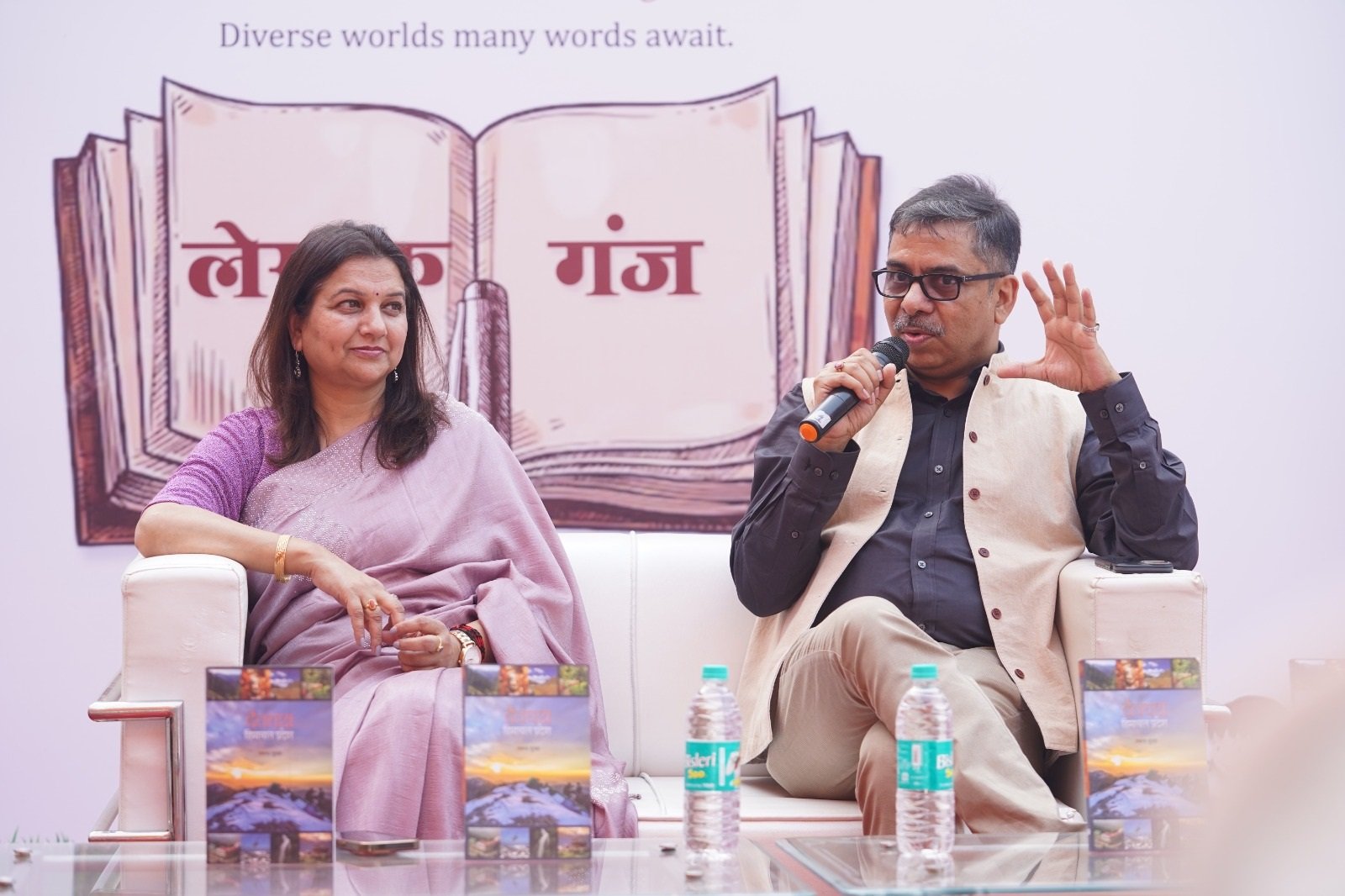Lucknow: Lucknow’s Gomti Book Festival is rapidly establishing itself as a vibrant hub for literature, art, and inclusive learning. Enthusiastic students of all ages are flocking to the festival, with Monday’s highlight being a unique session, Sparsh Ka Ahsaas: Ek Naya Anubhav, dedicated to visually impaired students. Hosted on the festival’s ‘Shabd Sansar’ platform, this special session offered an immersive sensory experience aimed at fostering creativity and inclusivity.
A New Experience for Visually Impaired Students
In Sparsh Ka Ahsaas, Assistant Professor Smriti Saraswat from IIT Roorkee emphasized the importance of “totality,” teaching students about equality and inclusivity through sensory exploration. Smriti encouraged students to interact with various objects like clay toys, flowers, sandpaper, and plastic, encouraging them to interpret these items by touch, sound, and smell. Smriti also guided students from Dr. Shakuntala Mishra National Rehabilitation University to craft symbolic shapes, such as lotus flowers, trees, and Swastikas, all representing messages of environmental conservation and teamwork.
Engaging Storytelling Sessions
The literary fest continued to captivate audiences with a story session led by celebrated author Mrs. Anita Bhatnagar. Introducing her book Garam Pahad, Bhatnagar read aloud a tale, Macau’s Birthday, to visually impaired students, engaging them in an interactive Q&A about the narrative. The students, attentive and deeply engrossed, demonstrated their comprehension, with those providing correct answers receiving books as gifts.
Revisiting India’s Forgotten Revolutions
In another session on Shabd Sansar, historian Ambalika Bhat introduced young minds to India’s lesser-known freedom fighters. Starting from the arrival of the Portuguese in 1499, she shared stories of revolutionaries like Rani Abbakka, Rani Velu Nachiyar, and Narasimha Reddy, heroes often sidelined in conventional history texts. Through an interactive approach involving historical movie clips about key battles such as the Battle of Plassey and the Battle of Buxar, Bhat instilled an appreciation for India’s extensive history of resistance.
Learning Art Through Puppetry
Seema Vahi Mukherjee led an engaging puppet-making workshop for children, drawing their attention by mimicking a parrot’s voice and demonstrating puppet-making techniques using colored paper and simple tools. Children enthusiastically participated, crafting bird puppets and discovering the art of shape formation and storytelling through puppetry.
Accessing Free Digital Books
A session focused on the National Digital Library (NDL) informed students about this initiative by India’s Ministry of Education. The NDL offers digital books across multiple genres and languages, making quality literature accessible nationwide. The session encouraged students to explore this free, versatile resource.
Film Festival Inspires and Entertains
The third day of the festival also featured a Children’s Film Festival, where animated and silent films addressed social themes, such as child labor, that resonated with young audiences. Films from Iran, India, and Italy – including Kasadara (Tharoli) and School Bell – used silent storytelling to captivate and emotionally engage students, drawing strong reactions and discussions.
Exploring Media and Society
The festival’s Lekhak Ganj stage hosted an insightful discussion on ‘Media and Society,’ led by senior journalists Sudhir Mishra and Dr. Rachna Gupta. Mishra spoke on the evolving media landscape, highlighting both the benefits and challenges brought by digital advancements, such as the decline of field reporting. He emphasized the need for journalistic integrity and engagement with social issues, while Dr. Gupta underscored the importance of communication skills in media and advised students to develop these competencies.
Crafting Stories for the Screen
In the next session, Compelling Stories for the Screen, screenwriters Manoj Rajan Tripathi and Sudhir Mishra discussed storytelling techniques for the digital age. Tripathi shared insights on perspective in storytelling and the importance of factual accuracy in biographical films, while Mishra added that strong stories connect with the common man, blending creative freedom with responsibility toward authenticity.
A Glimpse into Lucknow’s Literary History
The third session of the day, Through the Lens of Art and Poetry, explored Lucknow’s rich literary heritage with references to Edward Lear and Tennyson’s Siege of Lucknow. Researcher Anindyo Roy, under the moderation of Chandra Prakash, delved into Lucknow’s historical significance in literature and art.
Cultural Performances
The day concluded with cultural performances by Lucknow University students, beginning with a thought-provoking play, Ajgar, portraying social issues. Performers like Vivek Soni, Manas Bajpai, and Aayushi Maurya captivated the audience, followed by a spirited Maharas dance performance by students, including Pragati Katiyar and Shreya Shukla. These performances underscored the festival’s commitment to celebrating diverse forms of expression.
The Gomti Book Festival has successfully carved a unique identity as more than just a book festival. Through its blend of literature, art, and inclusive activities, it has created a welcoming space for students and literature enthusiasts to learn, engage, and creatively express themselves. As it continues, the festival promises to nurture a passion for knowledge and art among all attendees.




